August 2015
Wing Paddles: A Surfski Paddler’s View from the Middle of the Pack by Mark McKenzie
A few weeks ago, during one of our email conversations Wesley thought it would be helpful if I would write an article giving my impressions of the various paddles that I’ve tried since I began paddling in the fall of 2009. It is a decent sized list, as I have run through some paddles trying to find the one that’s ‘right’ for me. I did have some reservations though, as being co-owner of Eliteoceansports, importer of Jantex (since the fall of 2013) and G’Power paddles (since the spring of 2013), as well as the Think Powerwing, I was a bit concerned about how such an article would be taken.
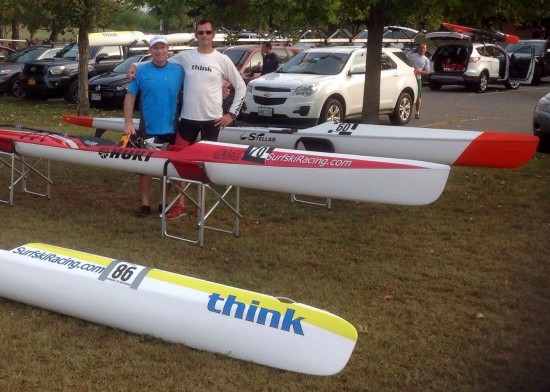
Wesley and Mark McKenzie at 2014 East Coast Championship
Keep in mind that my two longest standing paddles of choice prior to becoming an importer of any paddles were the Jantex Gamma Medium and Jantex Beta Medium, and that I’d tried many paddles before settling on first the Gamma, then the Beta. Still, to avoid bias as much as is possible, I’ve chosen to give my personal impressions of all of the paddles rather than a review of which is best, as I find that to be a very personal decision anyway, based on a variety of factors. As you will see below, I’ve owned (or borrowed long enough to try in a variety of conditions) lots of paddles! Still, there are a lot more out there that I’ve not tried, so any omission is simply b/c I’ve not tried it. Because of this, there are gaps in the review to be sure, in particular the fact that there are no Braca paddles included here. The reason for that is simply that I’ve never owned one, or had access to one for long enough to test it and form an opinion. So, if anyone wants to send me some Braca surfski paddles to try, I’ll gladly demo them in a variety of conditions and add them to the review!
2020 Update – Great News – Now you can easily own a Braca-sport paddle and be perfecting your catch by this weekend!
Checkout large inventory of Braca Surfski, Marathon and Sprint paddles.
Braca XI Van Dusen and Braca IV, both in surfski paddle configuration, are available in USA at FastPaddler.com
Also, keep in mind that I am not an engineer or an expert in paddle design or building, nor am I claiming to be an expert. This is my personal experience and view as a middle-age, middle of the packer, who paddles 90% of the time in
the Atlantic Ocean or in choppy conditions in Charleston harbor here in South Carolina. OK, the business of disclaimers is out of the way, let’s take a look!
Jantex Paddles (www.jantex.sk):
– Jantex Gamma Medium: This was the first paddle that I every owned that I stuck with for a long period of time (nearly 3 years). It’s a teardrop shaped blade with a reasonably clean, strong catch and a dynamic pull phase. Exit is clean but not super clean. This paddle performs well in a wide variety of conditions and I find it to be easy to manage in chop and ocean swelling, as the pull phase is easily altered mid stroke and the catch is quite forgiving for being so clean. So, as you tire or as your form lags due to conditions, the paddle will continue to perform and not ‘bite back’. Also very easy to alter your cadence with this blade, a nice shape if you like a higher cadence. I found that I could paddle comfortably with this blade in a variety of conditions for up to 30km. – Jantex Gamma Small: Same feeling as the Gamma Medium but MUCH smaller. The size gap between these two blades makes the jump to this size feel big and this paddle just feels very small, because it is…I tried this blade for a short period of time several years ago and quickly returned to my Gamma Medium all the time. This size in this blade is definitely for smaller paddlers, or very long distances. – Jantex Gamma Rio Medium Minus: This paddle is a similar shape and surface area as the regular Gamma Med but the shape is slightly more aggressive. The result is a powerful catch (more powerful than the standard Gamma Med), a very clean catch, but a less forgiving catch than some other blades. The pull phase remains dynamic like the Gamma Medium and the exit is very clean and smooth. Overall, the blade is reasonably forgiving but the catch needs to be made smoother than say the Gamma Med or an Epic Mid, so it’s definitely a bit less forgiving than those blades. It also feels bigger than the other blades in it’s size class, certainly bigger feeling than the Gamma Med and Epic Mid. I find that anything much over 10km with this paddle and I start to tire, my technique starts to get sloppy, and I lose efficiency with this paddle. That said, it is a nice paddle for a clean downwind, where you’re using short, hard bursts to catch runs, then resting. This is the paddle that Sean Rice is currently using, if that gives you an idea of what kind of power can be generated with this blade.
– Jantex Gamma Rio Small Plus: Very similar overall to the Gamma Rio Medium Minus, but the small blade size makes it accessible for distance paddles for mere mortals like myself. Again, a super clean catch and exit, with a strong catch and dynamic pull phase, easy to alter cadence. On the water it feels very similar in size to the Gamma Med even though it has significantly less surface area. An all around performer for a mid-packer who is looking for strong/clean catch that won’t tire them out.
– Jantex Alpha Medium: A parallel wing blade paddle, it really wants a precise clean entry, otherwise you will get a consistent ‘plonk’ ‘plonk’ ‘plonk’ with this paddle. When you get it right, it has a longer pull phase and feels very clean and smooth. For me, this is a great distance paddle for a technically savvy paddler. These also seem to be popular with the lifesaving/round the cans crowd for some reason. – Jantex Beta Medium: My current paddle, and my main paddle for the majority of the past 3 seasons. Has a somewhat technical catch but is still reasonably forgiving. The catch is less powerful than the Gamma Rio shape and slightly less forgiving. Has a strong, locked in pull phase that lacks the dynamic feel of the Gamma line. This makes the stroke more difficult to alter and makes the paddle a bit more technical in chop and ocean swell. The trade off is that the paddle feels easier to leverage during the pull phase and doesn’t ‘slip’ in the water as much for me. The exit is very clean. This paddle can be frustrating in chop and ocean swell, particularly if you’re used to a paddle with a more dynamic or alterable pull phase. Should be slightly tougher to alter your cadence with this paddle but I don’t seem to find it an issue.
Much like the Gamma Medium this is a paddle that I have used comfortably in a variety of conditions up to 30km.
– Jantex Beta Rio Medium Minus: Has a very strong, technical catch that is slightly less forgiving than the Beta Med, and definitely not as easy to alter cadence. Pull phase is equally locked in and exit is quite clean as well. Much like the Gamma Rio Medium Minus, this blade feels much bigger than the same sized Beta Med, as the powerful catch fatigues me quickly. I find that much more than 6km with this paddle and my technique starts to fade away and I become a flailing mess of inefficiency. Would be a really great paddle for a reasonably strong
flat water distance paddler.
– Jantex Beta Rio Small Plus: Oh my! A highly technical, very unforgiving catch, with a strong/locked in pull phase and very clean catch. If your technique is off on your catch this paddle will propeller down into the water beside the boat and pull you with it. Very hard to use efficiently in chop or ocean conditions. This is a
paddle for a paddler with a very clean, efficient, and consistent technique looking for a smaller blade for flat water distance efforts. The feel of this blade reminds me very much of the Select Kayaks Rush Racing Small.
**General notes regarding Jantex paddles**
– Jantex offers 4 shaft stiffnesses; Extra Stiff, Stiff, Soft, and Flexi Soft. All of my Jantex paddles, save one, have been soft shafts. For surfski applications this is the best compromise of stiffness, weight, and forgiveness of the bunch. This is the shaft that Sean Rice uses on his Medium Minus. The Stiff shaft is slightly lighter and slightly less forgiving, so you’re trading a bit of comfort for a stiffer/lighter shaft. The Flexi Soft is a nice alternative for longer distances or smaller paddlers, though I’ve recently seen photos of an elite level stronger surfski paddler using this shaft. The Extra Stiff is really reserved for very strong sprint paddlers only. Jantex shafts have a bit of texture to them and are round.
– Jantex has a proprietary stainless steel clamp and quick release system they’ve adopted over the past year. It clamps around the shaft rather than long ways across it. I find it harder to open and close on the fly compared to more standard quick release clamp, but it appears more sturdy and is adjustable.
G’Power Paddles (www.gpower.pl):
– Galaxy II Small: Galaxy II is G’Power’s teardrop shaped paddle. Similar feel in the water to the Jantex Gamma Rio Small Plus only slightly bigger, slotting nicely between it and Gamma Rio Medium Minus in terms of power, otherwise, performance and feel is very similar.
– Galaxy II Medium: Again, feels very similar to the Gamma Rio paddles only this one feels slightly larger and more powerful than the Gamma Rio Medium Minus. This would be a very nice paddle for a strong surfski paddler or a flatwater paddler looking for a nice, clean, powerful catch. My friend Charles Goodson used this paddle in his Stellar SEL at the MR340 this year.
– Nitro: This is a big sprint blade that is one of the smoothest feeling paddles from catch to exit that I’ve tried. Very clean, smooth catch, strong locked in pull phase, and very clean exit. Too much paddle for me beyond 2km, but if you are strong enough to paddle it, it feels silky smooth. Reid Hyle used this paddle to win the 12 mile North Shore Cup last year, so it can be used successful in distance ski paddling given the right engine.
– Ultralight: Smaller than the Nitro but a similar shape, this still feels like a big blade. Not quite as clean as the Nitro overall, it nonetheless has a very clean and technical catch, strong/locked in pull phase, and somewhat clean exit. This is a paddle that can bite back a bit and is not an easy paddle to use in chop and ocean
conditions. Two of my PRs on my time trial courses are using this paddle, but conditions on both days those were set were flat. I’m pretty sure that over 10km I am faster with this paddle than with my Jantex Beta, but it’s less forgiving and it’s bigger, so when conditions get rough or the distance extends beyond 10km this paddle
can become a handful for me. I tried using it in the 2013 L2L with disastrous results; too far, too choppy for this blade. 10km or less,flat water is where this blade excels for me.
– Maverick: Similar shape to the Nitro and Ultralight but smaller and more technical. This blade is not as technical as the Jantex Beta Rio Small Plus and Select Kayaks Rush Racing Small, but it’s in the same ballpark. Technical catch that is somewhat unforgiving if you get it wrong, locked in pull phase, exit similar to the Ultralight. Great paddle for a long distance flatwater paddling for a good technician.
– Cyclone L: This is G’Power’s parallel wing blade paddle. Very
similar to the Jantex Alpha but not quite as clean in my hands for
some reason.
**General notes regarding G’Power Paddles**
– G’Power offers 3 constructions: Hard, Medium, and Soft. The weight goes up as the construction gets softer and the weight penalty is noticeable to me. Because of this, I tend to stick with the hard construction. The Medium construction feels slightly more forgiving than the Jantex Soft Shaft. G’Power shafts and blades are built seamlessly and have a great look and feel. The shafts are round, have no texture to the surface, are very smooth and somewhat slick to me.
– G’Power currently uses a standard lever lock system that locks long
ways across the paddle rather than wrapping around it.
Epic Paddles (www.epickayaks.com)
– Epic Mid: This was one of the first paddles I tried when upgrading from my very first wing paddle. It has a decent but not super clean catch, nice dynamic pull phase, and reasonable exit. I find it a versatile paddle that is very forgiving, which makes it nice for a wide range of paddlers, and makes it nice for rough conditions in a variety of hands. It’s not the most dynamic feeling paddle in the water, and to me doesn’t have one great aspect to it, but the overall package does the job well in a wide range of conditions for a wide range of paddlers. The paddle feels light to me, lighter than the Jantex paddles. The shafts are oval and smooth, not quite a slick as the G’Power but still feels slick to me.
Think Kayaks (www.thinkkayak.com)
– Powerwing: Again, feels very similar on the water to the Epic Mid, but a smaller size. A versatile paddle that is very forgiving and suitable to a wide range of paddlers. Also a light paddle, which combined with the smaller blade size, makes it suitable for smaller paddlers and longer distances. The shafts on these are oval and smooth with a standard level lock system.
Knysna Racing (www.knysnaracingkayaks.com/)
– Swing Classic: My first wing paddle. I remember it feeling heavy and I remember it had a pistol grip on the right hand side which made my wrist ache after every paddle. Another forgiving wing paddle that worked well for me as a beginner and would probably be serviceable to a variety of paddlers in a variety of conditions. The clamp system on
this had a threaded sleeve that required a tool that came with it to tighten and loosen it.
Kajner
– Kajner 2L: Another teardrop shaped paddle. This is a paddle I tried when moving on from my Jantex Gamma Medium. It actually wound up feeling very similar to my Gamma Medium with a reasonably clean, strong, yet forgiving catch and dynamic pull phase, with a fairly clean exit. I remember it feeling very slightly smaller than my Gamma Medium. I didn’t stay long with this paddle, not because I didn’t like it, but because I was looking for something different from my Gamma Medium and this was too similar. The shaft on this paddle was round with some texture, fairly forgiving and flexy. The clamp system was a hose clamp that had what looked like a home made lever attached to the head of the bolt that tightened the hose clamp. The lever failed pretty quickly, so to tighten and loosen it, you had to use a coin to turn the bolt.
Select Kayaks (http://select-kayaks.com/en/)
– Rush Racing Small: Oh my, part 2!! Another highly technical, very unforgiving catch, with a strong/locked in pull phase. The catch is very clean if you get it right. If your technique is off on your catch this paddle will propeller down into the water beside the boat and pull you with it. Very hard to use efficiently in chop or ocean
conditions. This is a paddle for a paddler with a very clean, efficient, and consistent technique looking for a smaller blade for flat water distance efforts. This was the second wing paddle I ever owned, and it was an eye opener as it did nothing but steepen my learning curve. It was a very light paddle made of high quality prepreg carbon. The shaft was round and the clamp system required an allen key to loosen and adjust it, though the clamp itself had a little holder for the allen key.
Gut (www.jgut.cz)
– Gut M: This another biggish sprint blade that ties with the Nitro
for being super smooth and clean throughout the entire stroke. Super clean, smooth stroke, strong pull phase, buttery exit. It was ultimately too big for me and much like the Nitro, it is not the most forgiving blade in ocean conditions. Still, it would be an interesting paddle in Jiri’s new XS size, as I’m wondering if the size is part of what made it hard to manage. The shaft on these is round and textured. Jiri uses a unique clamping system with an expansion mechanism inside of the female side that is operated with a dial you turn to tighten and loosen it. It worked very well but I wondered how you would service it if there were ever a problem. Along with my old Knysna Swing Classic, it’s one of the heavier paddles I’ve owned. My training partner Andy McMarlin has been using this paddle for the past 3 seasons to good effect in a variety of conditions and distances. Well, that about covers it, I hope some people have found this helpful, or at least interesting.There are a lot of different paddle shapes and sizes out there, and what you have to do is find the size and shape that suits your style, strength/fitness level, and discipline. The best paddle for one situation is often not the best one for another, so you may need to have more than one paddle in your quiver.
Summary
In summary the biggest take home I’ve learned from trying all of these paddles is this: Don’t get hung up on the numbers. The dimensions and sq cm measurements can be so misleading because there is so much more to how a paddle feels and performs in the water, and size is only one part of that. My two paddles of choice are a perfect example. The Beta Medium, Gamma Medium, Beta Rio Medium Minus, and Gamma Rio Medium Minus all have identical measurements but b/c of the difference in the shapes, the Rio shapes feel bigger and more technical. And the Beta Rio feels
bigger than the Gamma Rio. I have people call me all the time and tell me what size paddle they are using and end up comparing two completely different shape paddles thinking there will be no performance difference b/c they are the same dimensions. I have found this to be far from the case, so be careful when choosing based on dimensions, you may find yourself missing the bigger picture.
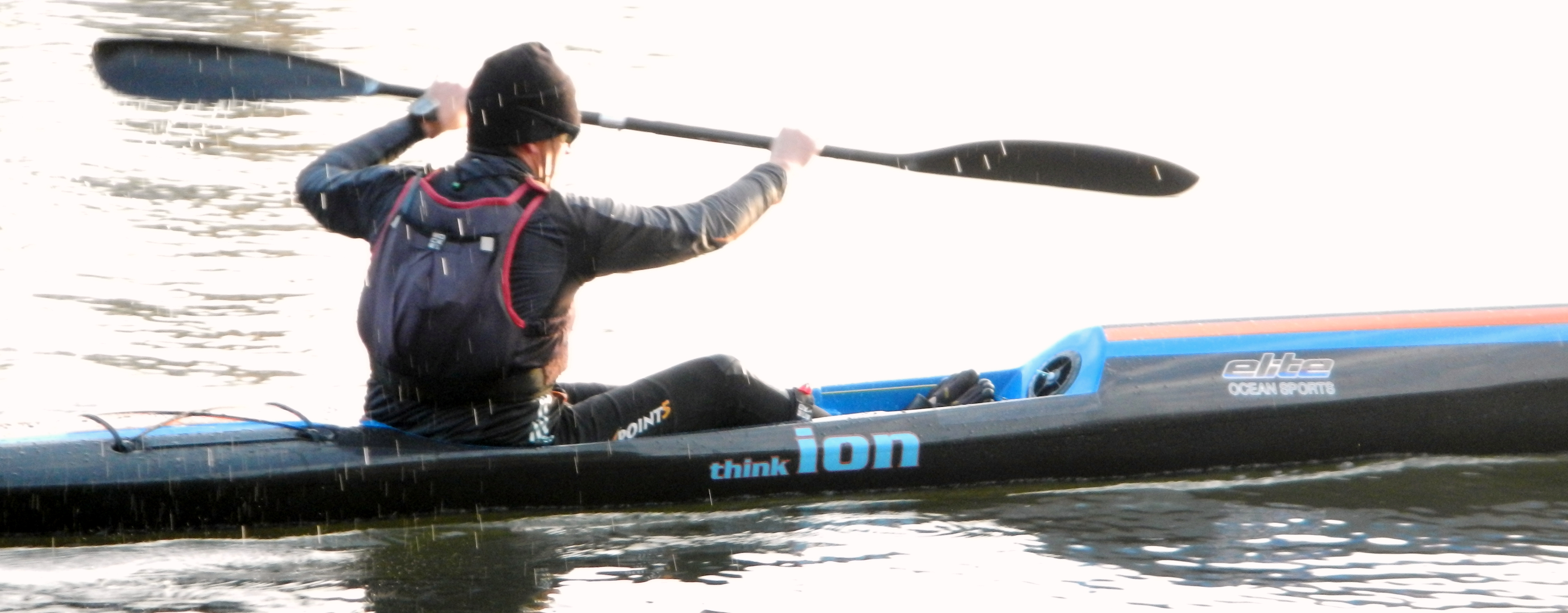
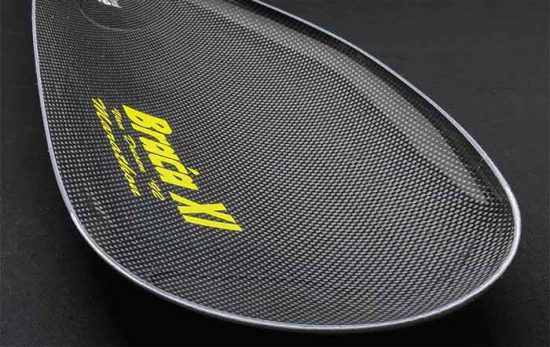
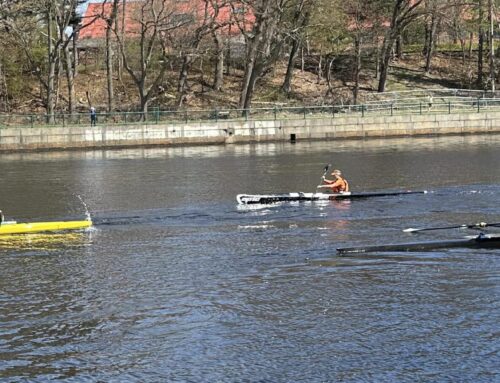
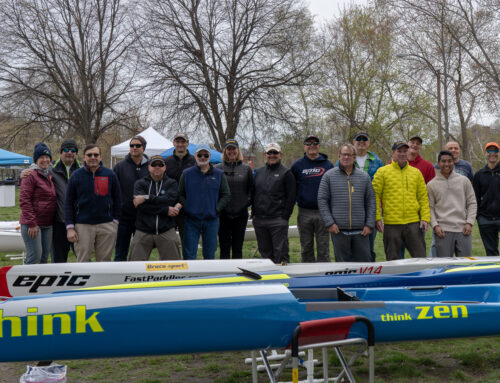
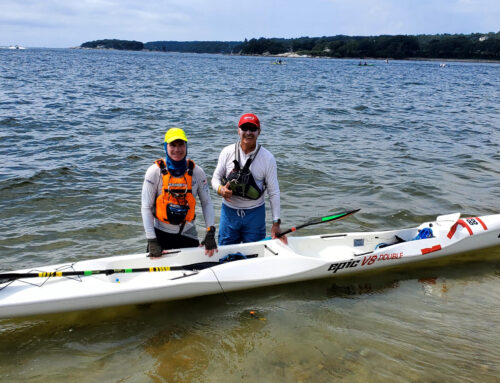
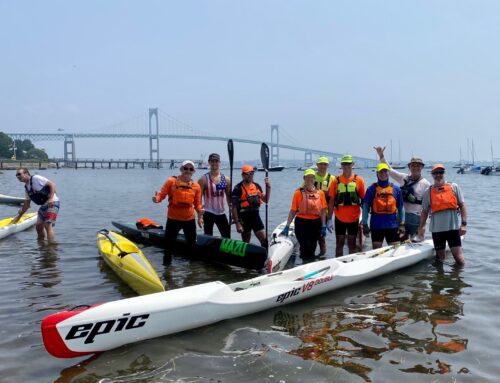
Leave A Comment
You must be logged in to post a comment.